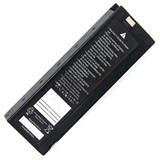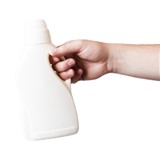Discover smarter ways to buy medical consumables in bulk. Compare quotes, reduce waste, and build long-term supplier deals in Australia.
Key takeaways
- Bulk procurement saves up to 30% on unit costs for high-usage medical consumables such as gloves, masks and gowns (Health Purchasing Victoria, 2024).
- Long-term supplier contracts can reduce delivery lead times by 25% and lower freight costs through consolidated shipments.
- Automated stock control systems can decrease expired stock waste by 40%, especially for items with defined shelf lives like COVID-19 RATs and nitrile gloves.
- Bundling consumables like examination gloves, face masks and swabs in procurement agreements can lead to additional discounts of 5–15%.
- TGA-approved suppliers ensure compliance with Australian standards, protecting your facility from regulatory risk.
Introduction
In Australia’s fast-moving healthcare landscape, smarter medical procurement isn't just about saving money — it's about building a supply chain that supports operational continuity, compliance and growth. Whether you’re managing a general practice, aged care facility or multi-site medical group, outdated purchasing processes can lead to stockouts, budget overruns and regulatory headaches.
This guide will help you implement bulk supply strategies that support long-term efficiency. It covers everything from forming supplier relationships and optimising inventory to minimising waste and streamlining admin. If you're ready to stop firefighting orders and start building a reliable procurement framework, read on.
Why bulk buying is essential for smarter procurement
Bulk procurement isn’t just about buying more — it’s about buying smarter:
1. Predictable demand means predictable savings
- Products like examination gloves, face masks, and RAT kits are used consistently across clinics and aged care.
- With stable usage, you can forecast needs and negotiate better unit pricing.
- According to the Australian Medical Association (AMA), bulk buying can cut procurement costs by up to 30% for essential consumables.
2. Reduces risk of stockouts
- Pandemic and flu season disruptions have proven the need for buffer stock.
- Facilities with pre-negotiated bulk orders are less vulnerable to supply shocks.
3. Streamlines freight and warehousing
- Fewer deliveries = lower shipping costs and less admin.
- Some suppliers offer free storage or staggered delivery schedules for large orders.
How to manage long-term supplier agreements
Long-term partnerships are key to procurement stability:
1. Evaluate supplier capabilities
- Choose suppliers that are:
- TGA-registered and compliant
- Able to handle bulk dispatch
- Equipped with digital order and invoice systems
2. Set clear contract terms
- Include:
- Fixed pricing tiers for volume brackets
- Agreed delivery schedules (monthly, quarterly)
- Terms for substitution if stock is delayed
- Clauses for inflation-linked pricing reviews
3. Consider supplier performance metrics
- Evaluate by:
- Delivery accuracy rate (aim for >98%)
- Response time to inquiries
- Availability of local support or reps
Inventory rotation and waste minimisation
1. Adopt FIFO inventory methods
- First-In, First-Out ensures older stock (e.g. gloves, RATs) gets used before expiry.
2. Use inventory management tools
- Cloud-based software like Cliniko, MedicalDirector or Fishbowl can:
- Track usage patterns
- Flag slow-moving or near-expiry stock
- Integrate with suppliers to auto-reorder
3. Avoid overstocking with rolling delivery agreements
- Negotiate monthly or bi-monthly deliveries of your bulk order to reduce onsite storage stress.
Reducing administrative burden
Manual processes waste staff time and introduce errors.
1. Consolidate your supplier base
- Aim to reduce vendors by 20–50%, increasing order volume with key suppliers.
- Fewer suppliers = fewer invoices, easier reconciliations.
2. Use purchase order and billing automation
- Systems like Xero, MYOB, or Procuret allow:
- Automated PO generation
- Scheduled payments
- Flagging discrepancies early
3. Track KPIs for procurement efficiency
- Monitor:
- Order cycle time
- Delivery lead time
- Invoice approval turnaround
Forecasting and planning stock cycles
Getting ahead of demand is crucial.
1. Use historical usage data
- Review last 12 months of usage for high-volume items.
- Overlay with known events (e.g. flu season, COVID-19 waves).
2. Identify seasonality
- Expect 20–40% increase in glove and mask usage from May to September (NSW Health, 2024).
- Plan procurement cycles accordingly.
3. Set re-order triggers
- Use min/max levels for auto-ordering
- Many suppliers will allow automatic reordering when thresholds are hit
Common FAQs about smarter medical procurement
1. What products are best suited to bulk procurement?
- Items with high, consistent usage and long shelf lives:
- Nitrile powder-free gloves
- Surgical masks and KN95s
- Face shields and disposable gowns
- Swabs and specimen containers
- Rapid antigen tests
2. How do I manage expiry dates when buying in bulk?
- Use FIFO inventory methods
- Set expiry alerts in your inventory software
- Consider suppliers who offer split shipping or rolling delivery
3. Is there a risk of overcommitting to one supplier?
- Mitigate risk by:
- Adding performance clauses to contracts
- Retaining 1–2 secondary vendors for critical items
4. What minimum volume qualifies as a bulk order?
- Varies by supplier, but often:
- 10+ cartons of gloves/masks
- 1000+ units of swabs or RATs
- Ask suppliers for tiered pricing thresholds
5. How do I ensure compliance with Australian standards?
- Only purchase from TGA-registered suppliers
- Check that gloves, masks, RATs and gowns have ARTG (Australian Register of Therapeutic Goods) numbers
Final thoughts
Smarter medical procurement in Australia is no longer just about price comparison. It's about creating systems that are resilient, compliant, and capable of adapting to operational growth and external disruption. Bulk supply strategies give you more than discounts — they provide control, predictability and strategic advantage.
By consolidating suppliers, improving inventory systems, and forecasting demand, your clinic or aged care facility can turn procurement into a performance asset — not just an expense.
Medical procurement doesn’t need to be time-consuming or reactive. With a bulk buying strategy in place, you’ll cut costs, reduce risk, and gain more control over your stock and operations.
Whether you're managing one clinic or a group of aged care facilities, the fastest way to start is by requesting quotes through MedicalSearch.


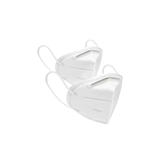

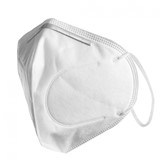
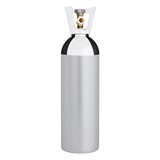

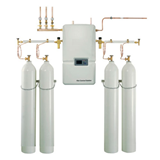

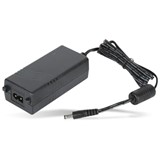
.png-160x160-state_article-rel-cat.png)
